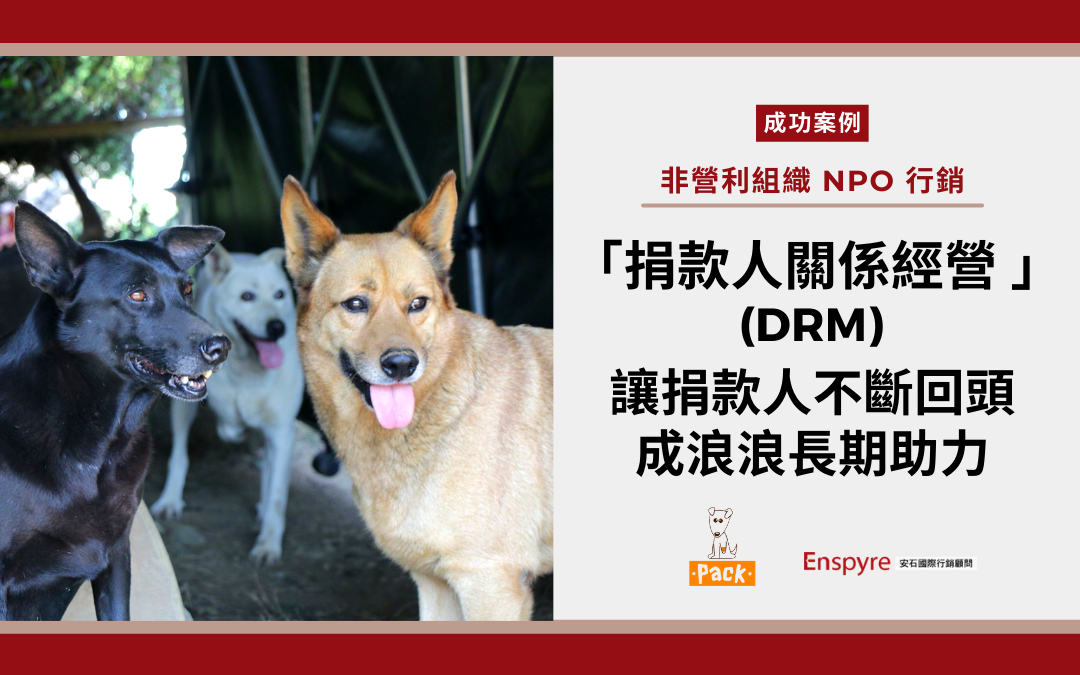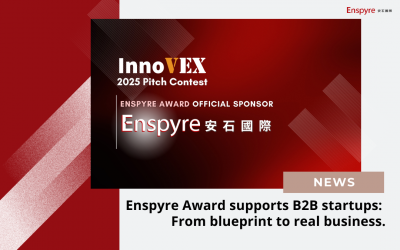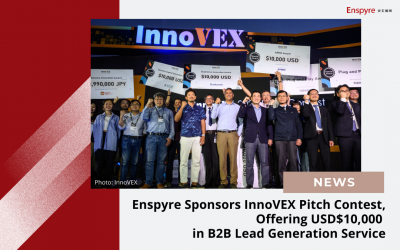Brand story and challenges
How does a non-profit stray animal shelter use “donor relationship management” to enable donors to continue to provide stable support?
PACK is a shelter organization located in Sanzhi. It was established in 2017 and it takes care of hundreds of disabled old dogs and promotes adoption and halfway programs at home and abroad.
“I saw almost no stray dogs in Sweden. It was only after I came to Taiwan that I discovered that the problem of stray animals was serious. 20 years ago, I started volunteering or donating to dog parks in various places, and one of them was PACK. In 2017, PACK asked us to formulate a long-term marketing strategy, so my partners and I took on this task without hesitation,” said Elias Ek, CEO of Enspyre.
Non-profit organizations, like businesses, also need stable income to maintain operations and cover expenses (personnel, rent, utilities, care expenses, etc.). Even though there are many animal lovers who pay attention to PACK, the actual number of donations is far lower than the number of followers, and among past donors, a very high proportion were single donations. This means that if you want to maintain the operation of the association, one of the biggest challenges is Donor Relationship Management (DRM).
Donor relationship management, simply put, is to establish a long-term and stable relationship by strengthening the interaction and connection between the two parties (donor and recipient).
While reaching new donors, don’t forget old friends
Non-profit organizations use a variety of marketing channels, such as street fundraising, organizing events, advertising, etc., to find new donors and supporters of the organization’s philosophy. However, the Association of Fundraising Professionals reports that, on average, the retention rate for new donors is only 23%. In other words, when you find 100 new donors, 77 will soon “lapse” and become “one-time donors.”
Additionally, it costs 4 to 7 times more to develop new donors than to get old donors to donate again. Just like corporate marketing, it takes much more time and money to persuade new potential customers to buy than to get customers who have bought the product to buy again, because old customers already have certain knowledge and trust of the product.
Of course, finding new supporters is an important part for non-profit organizations to spread their ideas and seek attention for issues. However, caring about old friends, finding out the most appropriate communication methods, frequencies and channels, establishing long-term relationships with donors, and enhancing retention rate, will help bring a stable operating foundation to the organization.
Therefore, in order to improve the retention rate of donors and allow former supporters to continue to pay attention to PACK, Enspyre has planned a two-step strategy of Donor Relationship Management to bridge the gap between the non-profit organization and the donors.
Step 1: Understand the background and purpose of the donor
The first step in “donor relationship management” is to understand the donor. Judging from the donor’s background and donation motivation and other indicators, the NPO can plan appropriate communication content. In researching donors, Enspyre leveraged its experience in telephone marketing. By conducting telephone surveys, Enspyre was able to understand the needs of donors better.
Step 2: Start with the content and adjust the communication model
Enspyre increased the exposure through several channels based on the habits of donors. Accurate multi-channel communication can reach people that otherwise would be lost, reduce the churn rate of donors, and increase the chances of each fundraising project being seen and supported.
In addition, according to an interview survey by NPOst, a public welfare exchange station, and feedback from PACK’s donors, what supporters care most about after donating is knowing that the organization use the donation properly.
Enspyre increased the frequency of interaction with donors, and increased progress updates on the donation project, so that donors can understand how their contributions help stray animals receive care. Corresponding to the concept of “positive reinforcement” in behaviorist psychology, providing positive feedback can enhance the donor’s willingness to donate again.
When conducting donor care calls, we heard many donors express their appreciation for PACK taking the time to call them to say thank you. This increased their attention to PACK and their willingness to donate increased.
PACK’s data reports show significant growth:
The proportion of “single donation” to “regular fixed amount” increased by 230% in one year.
The email opening rate for progress updates and adoption news after donations is about three times that of ordinary letters, and donors’ interest in the fundraising project has increased.
Total annual donations increased 2.7 times
The relationship between non-profit organizations and donors is “mutual cooperation”. Donors provide money and the organization take practical action. The common goal is to solve the problems we care about and make society a better place.
If you are a non-profit organization looking to establish long-term and stable fundraising sources through donor relationship management (DRM), please feel free to contact us.




